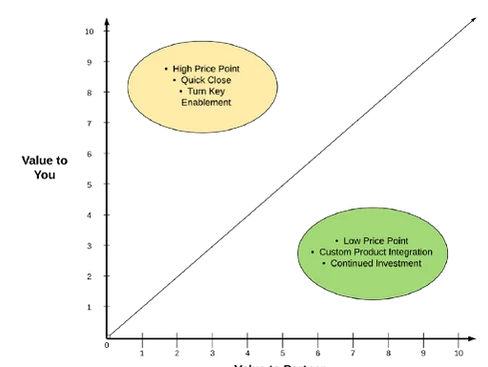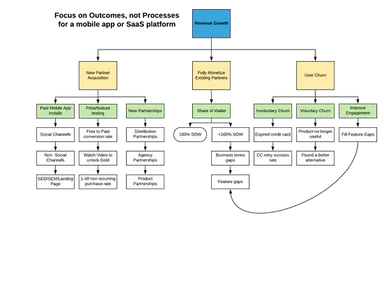Win Together, Lose Together


This article was guest written by Brett Orlanski, Business Development Advisor at Geer
The difference between a Partner and a Vendor
Two major challenges I frequently see when working in a Partnerships role in Tech are 1) establishing proper alignment of goals between the two parties and 2) working as a true partner rather than a vendor. Let’s deep dive both as they are connected.
Much attention has been spent analyzing how best to organzine a Partnerships team so as to operate efficiently as possible. I offered my approach to this in my Share of Wallet exercise detailed in a previous post. The TL;DR is that it is best to make the most of existing relationships that have the most upside, even if that means de-prioritizing larger partners. Often there is more to be gained by investing in the smaller partners that have more head room to grow rather than the large deals where you already capture most of the available dollars. But I submit that this assumes you at your company and your partner at their company share the same goals and this is not necessarily the case.
Follow me for a second. My wife is a marriage & family therapist and without trying, she often psychoanalyses our daily interactions. When I quibble with our kids over something silly or approach an issue from frustration, she is quick to point out that I didn’t connect with the other person before reacting. She calls it “connect before redirect” and I think something similar happens in our business dealings. In our quest to get what we want from some other partner, we fail to truly identify what they want. Maybe we do this because it’s the job to sell our company’s product and the product is static. Maybe we are in a rush and volume sell. Or maybe (most likely) we just don’t think to wonder what the other side really needs. Consider this split between two sets of common business goals plotted on the same matrix:
Truth be told, the other party probably doesn’t need what you sell. My mantra is to sell medicine and not vitamins but that’s not always possible. In order to align your goals with those of your partner, we need to adopt a true partnership mindset, which brings us to my second point: Be a Partner and not merely a Vendor. By this I mean put skin in the game. Be willing to share in the upside but also carry the downside if that happens. If your product does as your promise, then offer scalable deal terms that reward continued investment (e.g. reduced rates at higher budgets which is good for them, and extended-term length which is good for you). But also offer refunds or discounts if your product doesn’t perform or enable the benefits you sold in. This way you are really in bed together, as partners. Co-invest in each other (time, business planning, product integrations). Otherwise, you are a vendor that is just there for the money. That’s not necessarily a bad thing, but be honest about that relationship. It’s transactional and often short-lived.
To be a great partner to each other, align goals, and co-invest. Do this because it brings mutual value measured by revenue growth, time saved, access to new inventory/territory, or new features/functionality.
Am I right?


